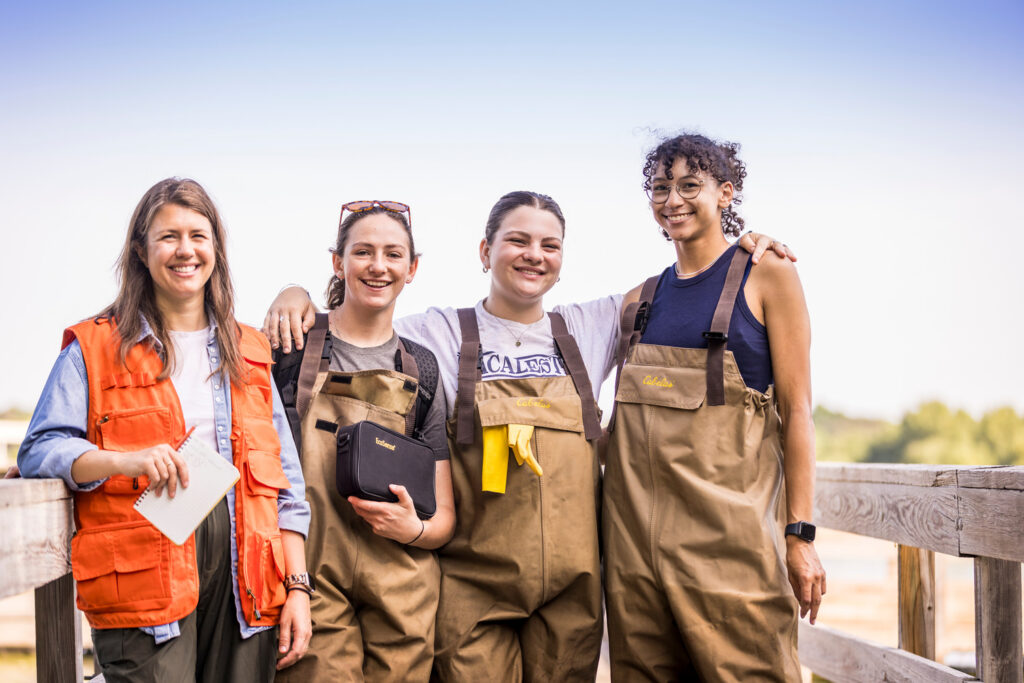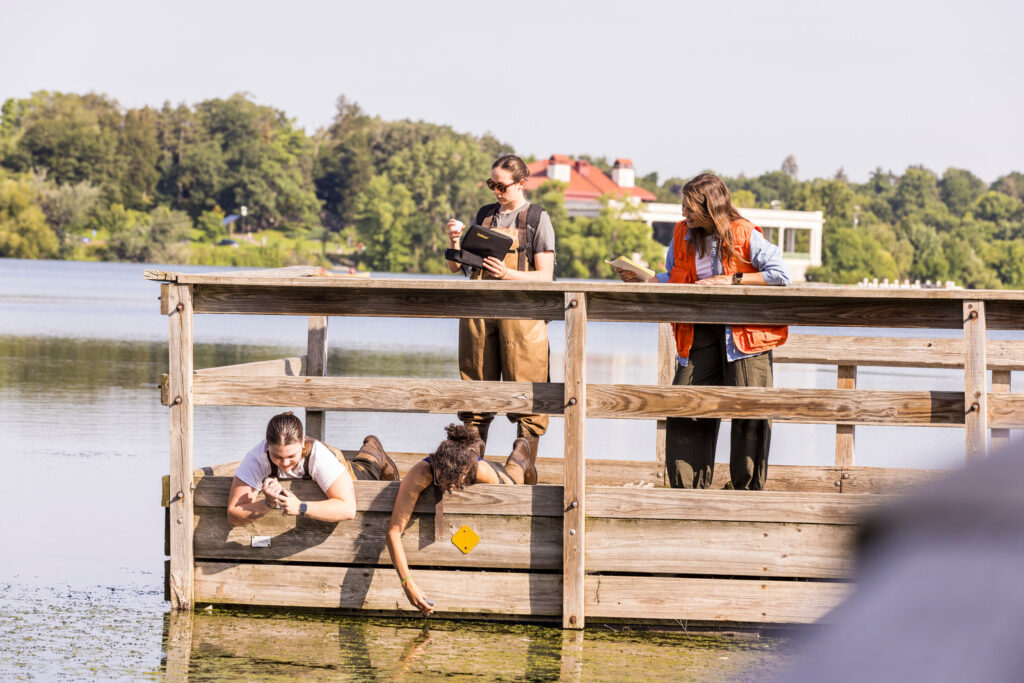
By Alexandra McLaughlin ’16
“We wrote research proposals at the beginning of the summer. It was great practice for professional writing.” —Georgia Akins ’26
If water is considered an amenity, are some people benefiting while others bear the risks? This question drives the summer research of Environmental Studies Professor Anika Bratt and her four students.
Though redlining ended decades ago, the effects of these discriminatory practices still influence urban environments, from tree cover to air pollution. However, the connection between redlining and water quality remains underexplored—a gap Prof. Bratt and her team aim to address.
“Water has direct implications for human health and the environment,” said Ava Rao ’25 (Chapel Hill, N.C.)
This summer, the team investigated whether harmful algal blooms are more common in redlined neighborhoods by surveying Twin Cities bodies of water for toxins produced by these algae. So far, some dogs have died from ingesting the contaminated water. As water temperatures rise due to climate change, this issue could worsen.

They also examined heavy metals in sediments, analyzing samples to see if redlined areas have higher levels of cadmium and mercury, possibly due to more industry and freeways.
Students developed sub-projects based on their interests. “We wrote research proposals at the beginning of the summer,” said Georgia Akins ’26 (Chicago and Atlanta). “It was great practice for professional writing.”
The team visited 28 sites over three weeks, sampling lakes and ponds.
“Occasionally, people ask what we’re doing, and we try to engage with them,” Prof. Bratt said.
Sophie Carpenter ’25 (Denver) added, “I love explaining our work and its importance. It’s an opportunity to build on science that supports policy and advocacy.”
The students also shared their experiences on TikTok, including fieldwork “fit checks.” When entering a body of water, they wore waders—waterproof overalls with boots attached to them. These came in handy when encountering quicksand.
Akins recalled, “Nobody lost shoes, but quicksand is very real.”
Rao added, “We’re always around to pull each other out.”
In the lab, they processed sediment samples, performing chemical analyses or sending samples to other labs.
“This project has been a sampler of different research types—fieldwork, lab work, statistics, and computer work,” Akins said.
The research continues this fall, with the team analyzing heavy metals in sediments. They plan to publish their findings and possibly attend a conference.
“We’re fortunate to have had this opportunity,” Akins said. “Anika Bratt has been a great PI, very helpful and supportive of our interests.”
“She wants to see us succeed,” Ollie Branch ’25 (Edina, Minn.) added.
Dr. Bratt emphasized, “I couldn’t do this research without these four students. As a student, you are a really important resource.”

October 7 2024
Back to top




